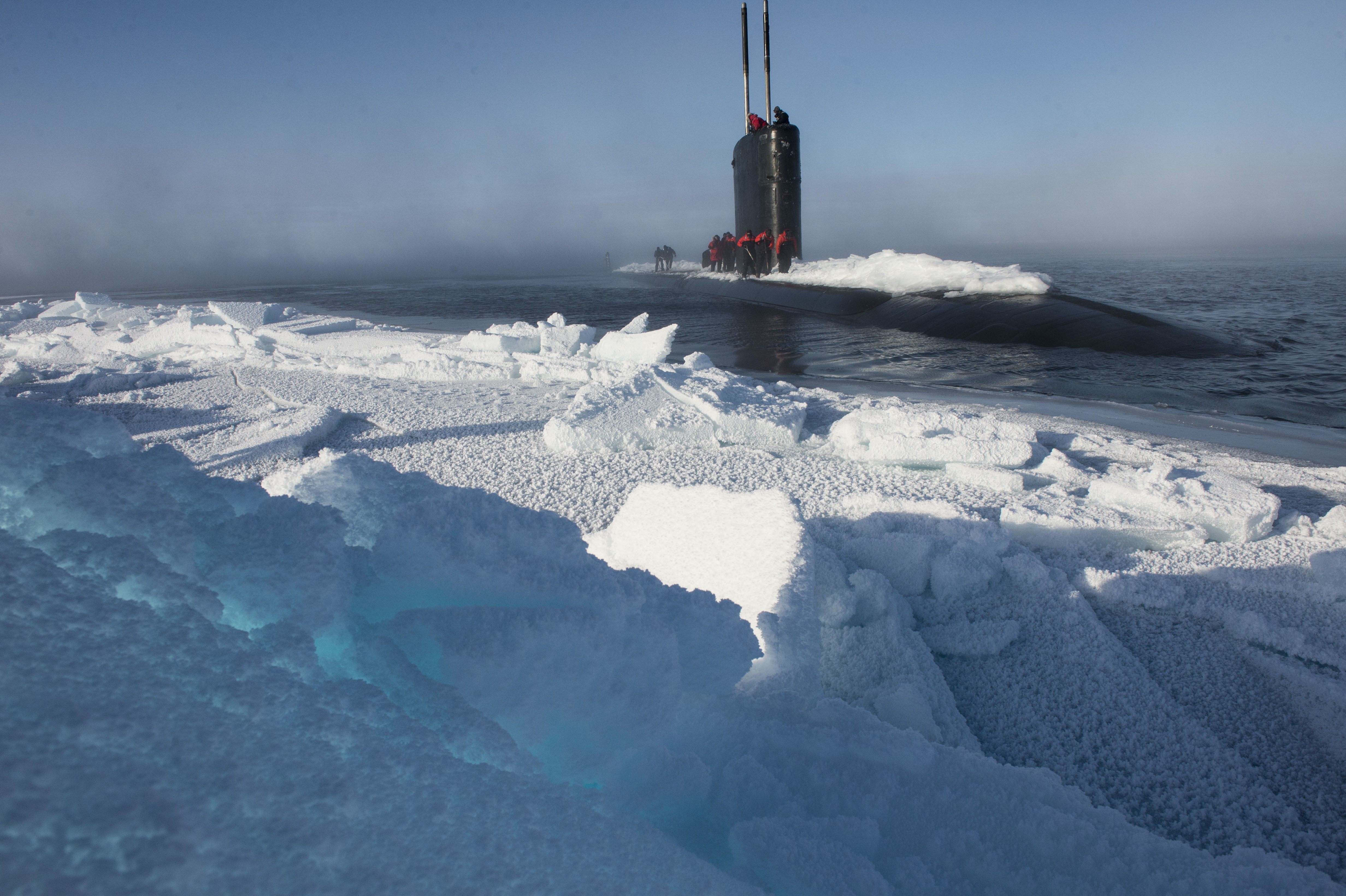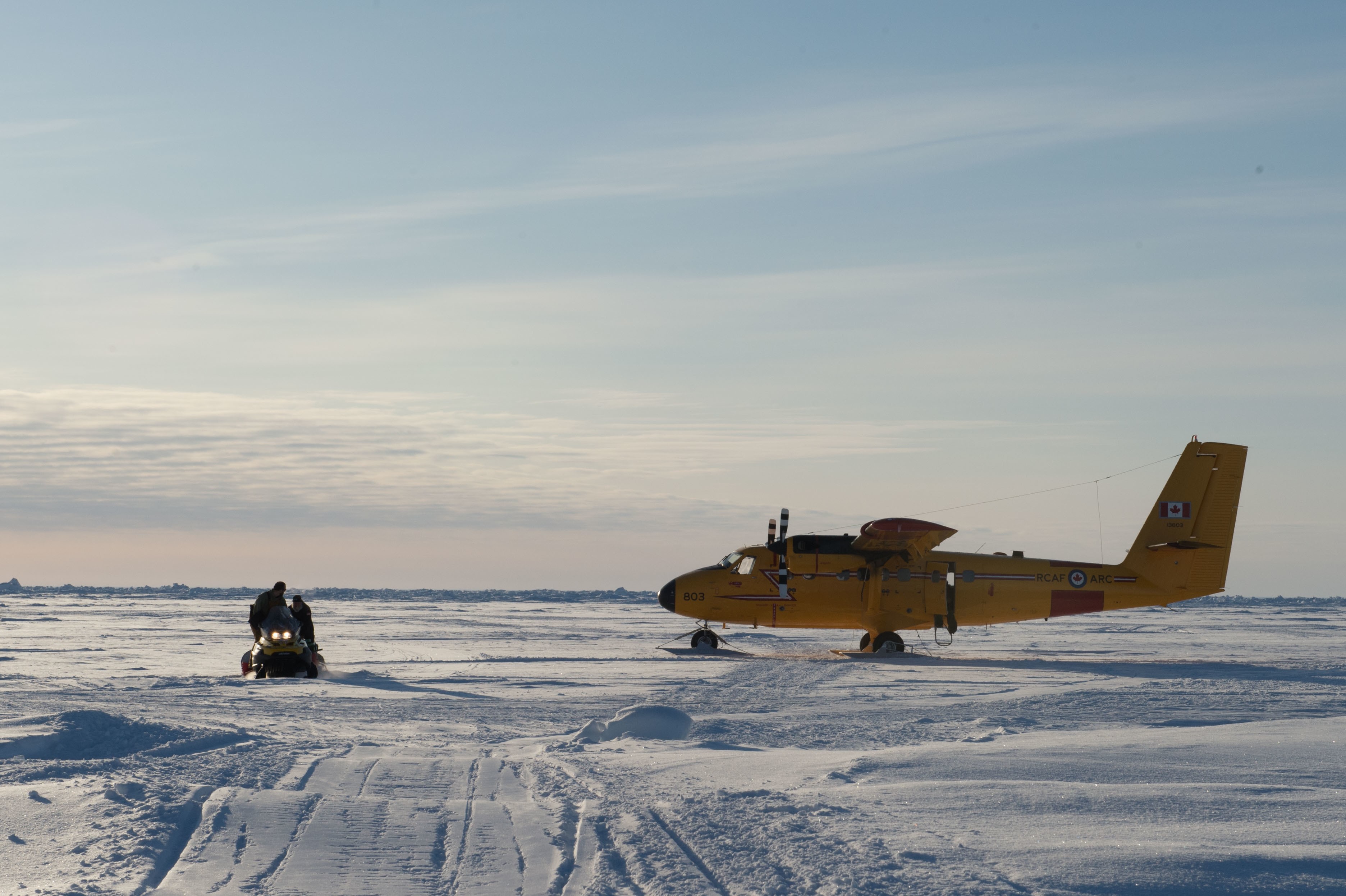U.S. Navy and NATO allies kick off five-week Arctic exercise
Three submarines and more than 100 personnel from the U.S., the U.K. and Canada are participating in the exercise in the Beaufort Sea.

The U.S. Navy together with forces from the United Kingdom and Canada began their bi-annual Ice Exercise (ICEX) 2018 on March 7. The five-week-long operation involves three nuclear submarines, a temporary ice camp, and over 100 personnel. The exercise aims to assess the Navy’s operational readiness in the Arctic’s unique environment and to strengthen cooperation with allies and partner organizations.
In its 28th iteration — the inaugural ICEX, which included the first surfacing of a submarine through the ice, was conducted in 1958 — the maneuvers will include the Seawolf-class fast attack submarine USS Connecticut, the Los Angeles-class fast attack submarine USS Hartford, and the British Royal Navy Trafalgar-class submarine HMS Trenchant.
The vessels will complete several Arctic transits, surface in proximity to the North Pole, and collect scientific data while under the ice. Vessels are specially prepared for Arctic operations with the use of hardened steel to protect their towers and diving planes while breaking through the ice.
Operating in the Arctic
“With every ICEX we are able to build upon our existing experience and continue to learn the best way to operate in this unique and harsh environment,” said Rear Adm. James Pitts, commander, Undersea Warfare Development Center of the U.S. Navy. Of particular importance is the testing of new tactics, techniques, and procedures under the ice alongside the Navy’s allies from the United Kingdom.

The operation began with the establishment of Ice Camp Skate, a temporary command center for the submarine operations. The camp is located on an ice floe in the Beaufort Sea about 250 kilometers north of Prudhoe Bay, Alaska. A specially modified Royal Canadian DHC-6 Twin Otter aircraft was used to deliver supplies and personnel to the camp. The facility is large enough to house and support more than 50 personnel. Total costs, primarily for the establishment and operation of the ice camp, are estimated at around $8 million according to the U.S. Navy. Previous ICEX operations involved up to 300 personnel and also saw the participation of military personnel from other NATO nations such as Norway and Denmark.
Climate Change Impacts ICEX
Despite record-high temperatures and ice melt in the Bering Sea, ice conditions appear stable in vicinity of the camp, according to current ice charts. In a sign of things to come ICEX 2016 had to be terminated early and the ice camp had to be evacuated when a massive crack in the ice formed through the command center. The rapid loss of sea ice across the Arctic may eventually also end the longstanding tradition and highlight of submarine crews breaking through the ice and surfacing near the North Pole as scientists have recorded extended periods of open water even that far north.
Nonetheless, according to the U.S. Navy, submarine operations in the Arctic are extremely challenging and vastly different from operating in any other ocean in the world. Aspects such as navigation, communication, and maneuvering require special techniques and training as the vessels travel under the ice cover for prolonged periods of time. Shallow waters across parts of the Arctic — water depth in the Chukchi Sea can be as little as 40 feet — require careful navigation to ensure the submarines stay in waters at least 60 feet deep. Thus, training exercises are crucial to maintain a working knowledge of how to operate in the High North.
Russia is watching
While Russia has not yet released any formal statement in response to the current exercise, it has in the past stated that it will carefully monitor foreign submarine activity in the Arctic to prevent violation of Russia’s maritime borders. The scope and extent of ICEX exercise pales in comparison to Russia’s quadrennial Zapad maneuvers, last conducted in 2017, which involved between 65,000-72,000 troops and included the firing of two intercontinental ballistic missiles.
Russia is also rapidly revitalizing its Northern Fleet and constructing or renovating military bases along the Northern Sea Route, where it could soon assert sovereignty, said the Commander of NATO’s forces in Europe, American General Curtis Scaparrotti in front of U.S. Senate Committee on Armed Services Thursday.